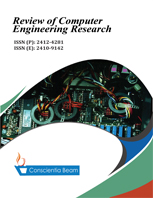Two-Stage Model with Rough Cluster and Salp Optimization Technique for Epistasis Detection
DOI:
https://doi.org/10.18488/journal.76.2021.82.27.40Abstract
The discovery of gene-gene interactions to identify complex diseases is one of the primary challenges in genome-wide association studies (GWAS). Genetic interactions (Epistasis) are typically seen as interactions between various single nucleotide polymorphisms (SNPs). Genetic interactions discovery can assist the researchers in identifying gene pathways, recognizing gene activity, and discovering potential drug targets. Rough Cluster based Salp Optimization for Epistasis detection (RCSalp-Epi) is a two-stage epistasis model that has been evaluated on a variety of simulated disease models. In the screening stage, the rough clustering algorithm is employed to partition the genotype data into different clusters. The selection stage presents Salp optimization with a single objective function (SalpEpi-SO) and multiple objective functions (SalpEpi-MO) over the clusters to find disease-related SNP combinations. RCSalp-performance Epi's is evaluated in comparison with SalpEpi-SO and SalpEpi-MO. The outcome of the experimental analysis revealed that RCSalp-Epi-MO is superior to SalpEpi-SO and SalpEpi-MO in terms of power and execution time.





